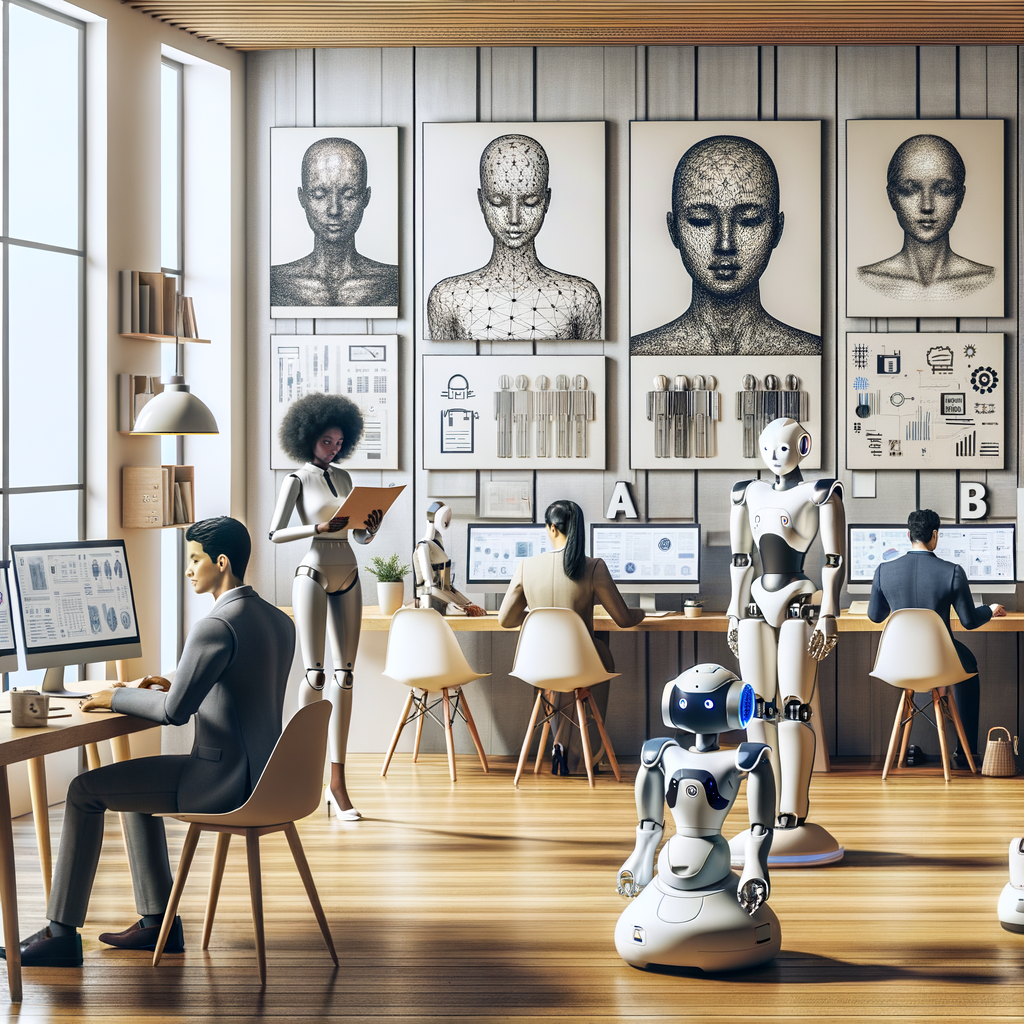The intersection of artificial intelligence (AI) and robotics has given rise to a new era of companion robots that are transforming how humans interact with machines. These advanced robots are designed to provide companionship, assistance, and even emotional support, making them a significant part of daily life for many. As AI technology continues to evolve, companion robots are becoming more sophisticated, intuitive, and capable. This article explores how AI is revolutionizing interaction with companion robots, highlights advancements in robotics that are shaping a new era of companionship, and delves into the ethical considerations surrounding AI-powered companions.
AI Revolutionizes Interaction with Companion Robots
Artificial intelligence is fundamentally changing how we interact with companion robots. At the core of this transformation is the ability of AI to process and learn from large datasets, allowing robots to understand and respond to human emotions and behaviors more naturally. Through machine learning algorithms and natural language processing, companion robots can now engage in more meaningful conversations, recognize emotional cues, and adapt their responses based on individual user preferences and moods.
The integration of AI has also enhanced the sensory capabilities of companion robots. Equipped with advanced sensors and cameras, these robots can interpret visual and auditory information to navigate and interact with their environment effectively. For example, robots designed for elderly care can now detect falls and alert emergency services, offering an additional layer of safety and reassurance. This ability to sense and respond to changes in the environment is a testament to AI’s potential in making companion robots more autonomous and attentive.
Moreover, AI enables companion robots to personalize user experiences. By learning from past interactions, these robots can tailor their functions to better suit the individual needs of their human companions. Whether it’s adjusting the tone of voice, suggesting activities based on past preferences, or reminding users about important tasks, the personalized interaction facilitated by AI creates a more engaging and supportive companionship.
Beyond individual interactions, AI is also facilitating broader social integration of companion robots. These robots are increasingly being used in public spaces, such as hospitals and schools, to provide assistance and information. AI allows these robots to adapt to different social contexts and interact with diverse groups of people, enhancing their utility and acceptance in various settings.
Advancements in Robotics: A New Era of Companionship
The field of robotics has seen remarkable advancements, paving the way for a new era of companionship. Improved hardware, such as more precise motors and lightweight materials, has made modern companion robots more agile and versatile. These physical improvements, combined with AI-driven software, have expanded the capabilities of robots to provide companionship that goes beyond mere conversation.
One of the most notable advancements is the development of social robots that can mimic human expressions and gestures. These robots use AI to analyze facial expressions and body language, allowing them to respond with gestures that convey empathy and understanding. This level of interaction creates a more natural and comforting presence, making it easier for users to connect with their robotic companions on an emotional level.
In addition to mimicking human-like gestures, companion robots are increasingly being designed with specific purposes in mind. For example, there are now robots specifically designed to assist individuals with autism by providing social cues and promoting interaction. These specialized robots leverage AI to understand the unique needs of their users and deliver targeted support, leading to improved outcomes in therapeutic settings.
The advancements in robotics are not just limited to physical interactions; they also include improvements in connectivity and integration with smart home systems. Companion robots can now seamlessly interact with other smart devices, such as lights, thermostats, and security systems, creating a cohesive and supportive home environment. This integration further underscores the potential of companion robots to enhance everyday life by providing convenience and support.
Ethical Considerations in AI-Powered Companions
While the potential of AI-powered companion robots is immense, their rise also brings several ethical considerations to the forefront. One of the primary concerns is privacy, as these robots often require access to personal data to function effectively. Ensuring that user data is collected, stored, and used responsibly is crucial to maintaining trust and protecting the privacy of individuals who rely on these companions.
Another ethical concern is the potential for dependency on companion robots. As these robots become more capable of providing emotional and social support, there is a risk that individuals may develop an over-reliance on them, potentially leading to reduced human interaction. It’s important to strike a balance between leveraging technology for companionship and maintaining meaningful human connections.
Additionally, the deployment of companion robots raises questions about responsibility and accountability. As AI systems become more autonomous, determining who is responsible for the actions of a robot becomes complex. This is particularly important in scenarios where a robot’s decision, influenced by AI, results in harm or unintended consequences. Establishing clear guidelines and regulations is essential to address these accountability issues.
Finally, the development and use of AI-powered companion robots also pose ethical considerations related to inclusion and accessibility. Ensuring that these technologies are accessible to all, regardless of socioeconomic status, is vital to avoid creating or exacerbating existing inequalities. Moreover, the design of companion robots should be inclusive, taking into account the diverse needs and preferences of users from different backgrounds.
As AI continues to advance, companion robots are becoming an integral part of our lives, offering new possibilities for interaction, assistance, and companionship. However, alongside these technological advancements come important ethical considerations that must be addressed. By understanding and navigating these challenges, we can harness the potential of AI-powered companion robots to improve quality of life while ensuring that these innovations are developed and used responsibly. As we move forward, the collaboration between technologists, ethicists, and policymakers will be crucial in shaping the future of companion robotics.

